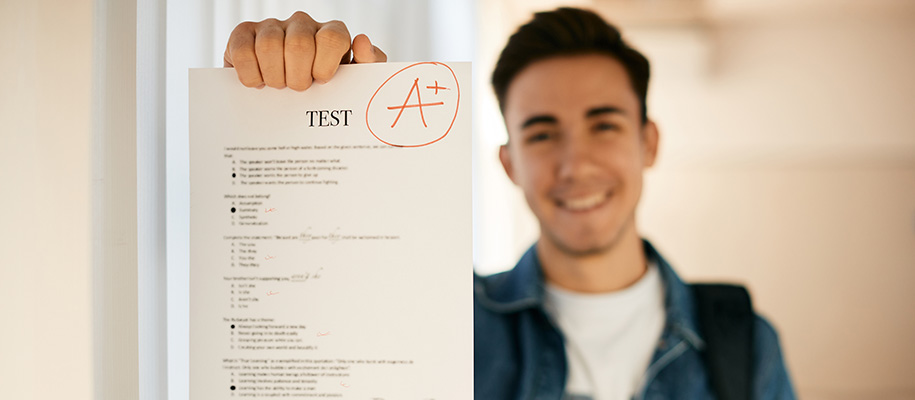Students with learning differences and attention disorders often struggle to successfully use traditional study strategies such as note-taking and reading. Research done by Blum and colleagues into the neural framework of people diagnosed with ADHD shows that they often experience dopamine disruption. Dopamine is a neurotransmitter that’s part of your brain's reward system, which contributes to feelings of pleasure and motivation. A lack of dopamine can result in a lack of motivation, moodiness, difficulty concentrating, and even memory loss. Let’s explore why adaptive learning techniques are so important for LD and ADHD students, plus some proven methods to boost your learning.
A look at learning differences and ADHD in the US
According to the National Center for Education Statistics, a reported 21% of undergraduates and 11% of graduate students in the US struggle with one or more learning differences. Of these students, 25% have been diagnosed with attention-deficit/hyperactivity disorder (ADHD). These percentages may seem low, but according to the ADHD Rating Scale—5 for Children and Adolescents, research has shown that college students with ADHD generally take fewer courses, have lower GPAs, and are more likely to drop out. Studies have also found that traditional study methods often do not address these students’ challenges with attention and executive functioning.
For this reason, students with attention-deficit disorders most often benefit from a distraction-free environment and the use of learning strategies that are more likely to grasp their attention and activate their memory. Let’s explore four specific strategies that are proven to increase academic performance: chunking content, scheduling regular breaks, employing active learning strategies, and reducing distractions.
1. Chunk your learning content
One study technique that has shown great success for students with learning differences and/or ADHD is the chunking method. Chunking involves breaking down larger tasks or content into smaller, more manageable chunks. If you need to study for an exam, try studying one chapter of the unit at a time, not the overall unit. Chunking also involves summarizing information, so you only study what’s important and relevant to the exam. This could mean writing a summary paragraph for each section of a textbook, creating a concept map to link information, making a bulleted list of main points, or creating posters to visually display important information.
2. Schedule in study breaks
Cornell Health suggests the use of regularly scheduled breaks during studying, especially for students who may be easily distracted or overstimulated. The Pomodoro Technique is a research-based study-break routine that encourages studying for approximately 25 minutes followed by a short break of two to five minutes. During the breaks, you’re allowed to and should “zone out” to give your brain a break. After four periods of studying, students should take a slightly longer break. You can do things like taking a walk, stretching, having a snack, listening to music, or enjoying a hobby.
The Pomodoro Technique of preset break periods has proven to be more effective than self-regulated breaks. According to the British Journal for Educational Psychology, students who take self-regulated breaks tend to take longer breaks and study continuously for longer periods, which ultimately leads to fatigue. Apps like Pomodor and Session provide preset timers to help students maintain this routine.
Related: 4 Unique Study Techniques for When the Usual Tricks Fail You
3. Employ active learning techniques
Active learning strategies involve retrieving information stored in your memory. If you’re studying by just rereading your textbook, that’s passive learning. Active learning means performing tasks such as taking practice quizzes or studying flashcards to encourage your brain to retrieve the information. In 2023, psychology researchers explored how students with ADHD struggle to retrieve information from memory, likely due to poor encoding: the receiving, organizing, and storing of information. With active learning, the information is encoded multiple times and in multiple ways each time it’s retrieved from your memory. Here are a couple of active learning techniques to try for improved encoding.
The Leitner System
The Leitner System is an active learning strategy that was introduced in the 1970s and is very popular still today. This spaced repetition technique helps commit information to long-term rather than short-term memory. With spaced repetition, information is reviewed multiple times while increasing the time period between each study session. For example, you could study a set of definitions twice per day for one week, once per day the following week, then every other day for the third week. The Leitner System uses flashcards separated into three to five boxes with each box assigned a set study interval. Cards in box #1 may need to be reviewed daily, while cards in box #3 only need to be studied weekly. As you initially go through the flashcards, place each card in a box based on how well you were able to retrieve the information. If you can retrieve the information accurately and efficiently, the card should go in box #3 so that it’s not studied as often.
The Feynman technique
Another helpful active learning strategy widely used by students with and without learning differences is the Feynman technique. This technique involves reviewing material, teaching it to someone else, and reviewing it again to fill in any gaps in knowledge. If you’re learning the process of photosynthesis, you should review the steps of the process before trying to explain it to someone else, preferably someone who isn’t as familiar with the material. If you’re unable to clearly explain a certain step or answer questions asked by the person you’re teaching, you’ll need to go back and review that information. Skip the information you can already explain well to gradually narrow down the amount of content you’re studying.
Other active learning strategies you can try include:
- The SQ3R method: Survey, Question, Read, Recite, and Review
- Creating your own quizzes or puzzles based on the content
- Blurting: setting a short timer and writing down as much as you can possibly remember about the topic
Related: Better Note-Taking Tips for High Schoolers to Take to College
4. Create a distraction-free study environment
While some people can tune out distractions and study practically anywhere, including loud cafés and public transport, others need to be more considerate of their study environment. Students with ADHD are more likely to be overstimulated by both internal and external factors and take longer to return to the task at hand after reacting to a distraction. For this reason, students with ADHD should do their best to reduce technology and environmental distractions during study sessions.
Reducing technology distractions
Distractions created by computers and phones are a major struggle for most students these days. This is magnified when you use your computer, tablet, or phone to study. You may be reading on your tablet when a social media notification pops up and grabs your attention. Fortunately, there are apps, browser extensions, and websites like Freedom, StayFocusd, and Cold Turkey to help reduce these distractions by muting your notifications for a set period of time while you’re studying.
Reducing environmental distractions
Just as invasive as technological distractions are distractions in your physical environment. Students learn more when they are in a quiet, comfortable setting, so you should have a dedicated study space at home where there’s minimal noise, a comfortable temperature, adequate lighting, little clutter, and comfortable furniture. If you don’t have access to a quiet space, consider using noise-canceling headphones.
Related: Spotify Playlists and YouTube Channels to Set the Vibe for Better Focus
While students with learning differences and ADHD may struggle with typical study strategies, there are plenty of other techniques that are proven to be more effective for your learning needs. Most importantly, you need to be persistent in finding strategies that work best for you with consideration to what your personal challenges and learning style may be.
Find out how Learner can help you with academics, and check out this handy infographic to Find Your Learning Style and Study Smarter.











